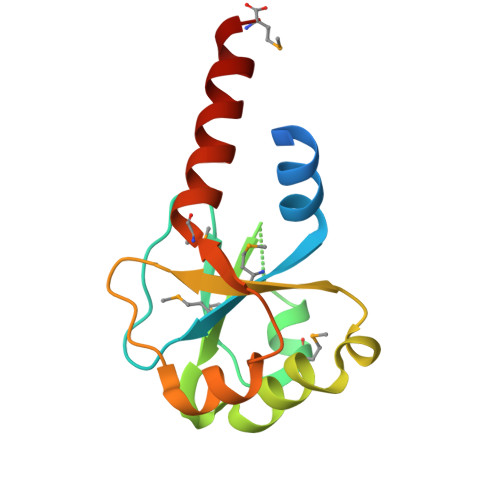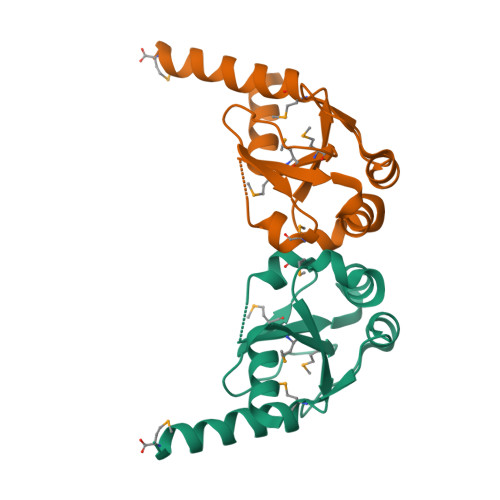Structure and dynamics of the P7 protein from the bacteriophage phi 12.
Eryilmaz, E., Benach, J., Su, M., Seetharaman, J., Dutta, K., Wei, H., Gottlieb, P., Hunt, J.F., Ghose, R.(2008) J Mol Biology 382: 402-422
- PubMed: 18647606
- DOI: https://doi.org/10.1016/j.jmb.2008.07.006
- Primary Citation of Related Structures:
2Q82 - PubMed Abstract:
Cystoviruses are a class of enveloped double-stranded RNA viruses that use a multiprotein polymerase complex (PX) to replicate and transcribe the viral genome. Although the structures of the polymerase and ATPase components of the cystoviral PX are known and their functional behavior is understood to a large extent, no atomic-resolution structural information is available for the major capsid protein P1 that defines the overall structure and symmetry of the viral capsid and the essential protein P7. Toward obtaining a complete structural and functional understanding of the cystoviral PX, we have obtained the structure of P7 from the cystovirus phi 12 at a resolution of 1.8 A. The N-terminal core region (1-129) of P7 forms a novel homodimeric alpha/beta-fold having structural similarities with BRCT domains implicated in multiple protein-protein interactions in DNA repair proteins. Our results, combined with the known role of P7 in stabilizing the nucleation complex during capsid assembly, hint toward its participation in key protein-protein interactions within the cystoviral PX. Additionally, we have found through solution NMR studies that the C-terminal tail of P7 (130-169) that is essential for virus viability, although highly disordered, contains a nascent helix. We demonstrate for the first time, through NMR titrations, that P7 is capable of interacting with RNA. We find that both the N-terminal core and the dynamic C-terminal tail of P7 play a role in RNA recognition. This interaction leads to a significant reduction of the degree of disorder in the C-terminal tail. Given the requirement of P7 in maintaining genome packaging efficiency and transcriptional fidelity, our data suggest a central biological role for P7-RNA interactions.
Organizational Affiliation:
Department of Chemistry, The City College of New York, 160 Convent Avenue, New York, NY 10031, USA.

















